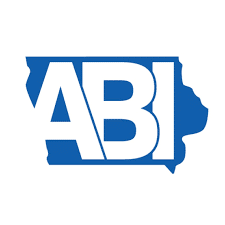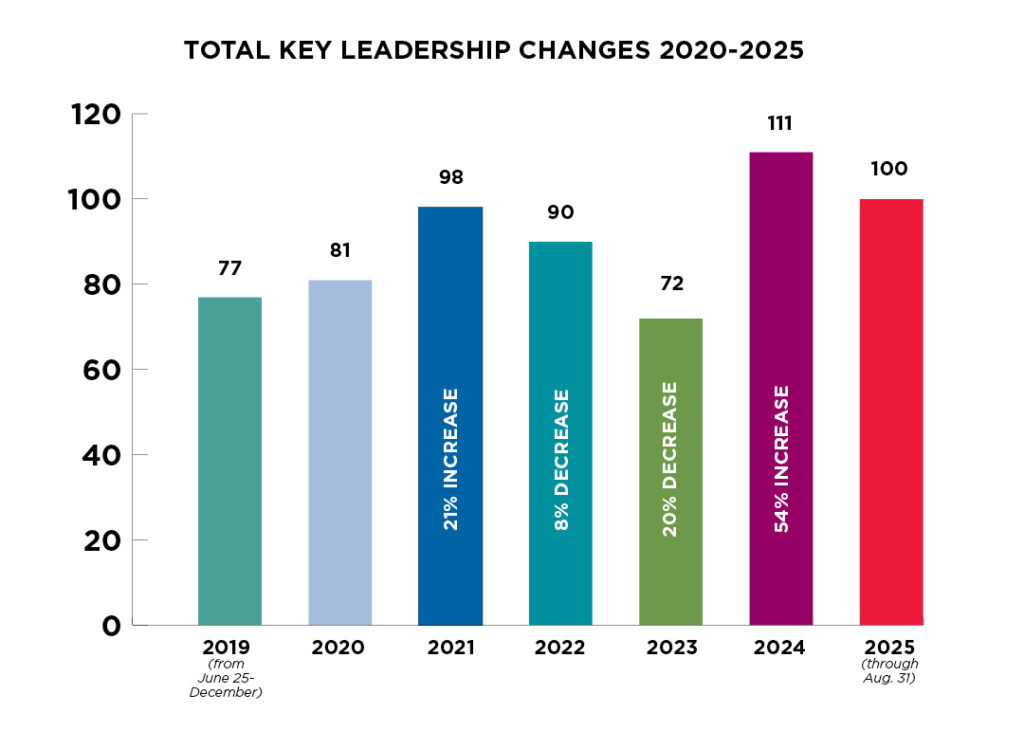Finding the ‘new normal’ in manufacturing
Pandemic response tests resilience, creativity of Central Iowa manufacturers

JOE GARDYASZ Jun 4, 2020 | 4:31 pm
11 min read time
2,502 wordsBusiness Record Insider, Manufacturing
Many of the components built into a number of name-brand major appliances and vehicles sold across the country are manufactured by West Des Moines-based Engineered Plastic Components Inc. But as production for those appliance companies and automakers has been slowed or halted due to the coronavirus pandemic, EPC has had to slow its production or temporarily halt work at its own plants.
“There are a lot of fixed costs that you have to deal with during those shutdowns,” said Reza Kargarzadeh, who founded Engineered Plastic Components 26 years ago. “So you have to be very good and manage your business in order to survive.”
The company’s diversified portfolio of customers across four major lines of business has been one of the reasons the manufacturer has been weathering COVID-19 disruptions reasonably well, Kargarzadeh said. From its start in 1994 with a single location in Grinnell, EPC has since grown to $300 million in annual revenue with manufacturing operations in nine states.
Kargarzadeh was one of three chief executives of three large Central Iowa-based manufacturers interviewed by the Business Record for a look at the challenges as they navigate an economy rocked by the global pandemic. Also discussing their companies’ responses to the pandemic in separate interviews were Jason Andringa, president and CEO of Vermeer Corp. in Pella, and Joe Crookham, CEO of Oskaloosa-based Musco Lighting.
Across the U.S. manufacturing industry, companies are seeing broad impacts to their finances, operations and employee safety, according to a survey recently conducted by the National Association of Manufacturers. Nearly 8 out of 10 manufacturers anticipate a financial impact due to COVID-19 shutdowns, while just over half — 53% — anticipate a change in operations. Nearly 36% said they are facing supply chain disruptions.
Engineered Plastic Components
With a workforce of more than 2,000 people across 16 facilities, Engineered Plastic Components has experienced partial shutdowns at five of its plants in response to some of its manufacturing clients reducing production or shutting down during the pandemic. Meanwhile, some of their other plants, like EPC’s medical and consumer production facilities, haven’t missed a day.
The components that EPC makes span a broad range of goods across four major product lines — automotive, appliances, medical devices and consumer products.
EPC’s products range from plastic components for the interior of Ford and GM vehicles such as dashes, pillars, consoles, cupholders and steering columns, to parts for medical devices made by companies like Abbott Labs that are used in hospitals and clinics.
In appliances, its largest customer is Whirlpool; EPC services two of the company’s plants in Iowa, including the Amana refrigerator plant, which normally makes several million refrigerators a year, Kargarzadeh said. “EPC makes a lot of the components, including handles, shelving, ice makers and all of the plastic parts that go into the doors. The majority of our appliance work is for refrigeration, but we also do things for their washers and dryers, as well as dishwashers.”
In consumer products, EPC makes things such as plastic totes and shelving units that are sold at Walmart, Home Depot and Lowe’s. You also see EPC components in many of the juice machines used in hotel breakfast bars. EPC makes components for off-road construction equipment built by Daimler and Caterpillar, such as the joysticks and the plastic trim in the cabs.
A University of Iowa graduate with a degree in mechanical engineering, Kargarzadeh worked for a couple of different manufacturers before launching his own enterprise in Grinnell. Early on, EPC made its first components for John Deere, and then began making various plastic consumer products. A penchant for quality enabled the company to land substantial contracts over the years with major original equipment manufacturers.
“[Customers] want to deal with somebody that can make their life easier,” Kargarzadeh said. “If you have the engineering know-how, if you have the resources to deliver on-time, quality products and to make the investment to make their unique products, that’s who they want to deal with.”
During this pandemic, EPC’s automotive customers have been among the hardest hit by shutdowns.
“In different states, you have governors making some of the calls [to shut down],” Kargarzadeh said. “And the automakers are unionized, so there are union demands that Ford and GM have. But most of our customers are considered essential. And because of them being essential, I think they find a way that they can produce products. But it’s nothing like the rate they used to be at for vehicles or appliances — it’s a much-reduced rate.”
Beginning around May 21, several of the major original equipment manufacturers that EPC supplies were scheduled to begin reopening production plants. “They are going to start up at about 30% and a week later be at 40% and then by the end of June they’re projecting they will be back to where they used to be,” he said.
Even after companies are back in continuous production, “I think that’s going to be a challenge for a number of businesses, quite frankly,” Kargarzadeh said. “But luckily, we have been strong enough — and diversified enough — to stick around, and we’re going to be fine coming through this.”
The pandemic has caused a lot of operational changes for the company, he noted. “Whether you want to call it the new normal, or the new normal until we have a solution.”
As an example, “We used to visit our customers all the time or our customers used to visit us,” he said. “Well, all of that has gone away. Now we’re relying on [Google] Teams and Zoom, just like our schools are doing. That’s a big change in our business, but we are actually getting pretty good at using the technology.”
Of course, there is frequent cleaning of surfaces, and gloves and masks, hand sanitizer and tape on the floor along the assembly lines have been measures taken at each plant, along with further spacing between some workstations. They’re also checking temperatures before workers enter the production area.
“On top of that, we have made it very clear that if someone is not feeling well and has potential symptoms like coughing or body aches or fever, to make sure they don’t come to work,” Kargarzadeh said. “We have a system that if somebody didn’t show up they got negative points, and if they got so many points, they were terminated. We are not applying any of that during this time.”
Every day has been a continual learning process in the face of uncertainties, such as how to effectively react when a worker suddenly feels ill during a shift.
“Systemwise, you have to find ways to increase your efficiencies when you’re having to space workers farther apart,” he said. “That might mean looking at how you might do that robotically — you’ve got to use all the technology at hand to get the job done.”
Vermeer Corp.
At Vermeer Corp., all of the nonproduction staff that could work from home, such as engineers, IT and administrative workers, were immediately shifted to operating remotely upon the governor’s emergency declaration, said CEO Jason Andringa, who continues to work from his office at the plant.
“We have frankly been surprised at how effective people can be using modern tools of communication and collaboration to work remotely,” he said. “We continue to be in that mode and we’re going to continue to work from home at least through the end of May, and it will undoubtedly extend a lot longer than that.”
Vermeer has adopted protocols recommended by health officials at the federal and state levels for in-plant employee safety, Andringa said.
“From a production standpoint, we started implementing a series of questions to be asked when people arrive to work: Are you feeling unwell? Have you been around anyone with COVID-like symptoms, etc. And if the answers are not appropriate, they go home and thankfully we have the federal CARES Act and state unemployment so that we’re confident that our team members will be taken care of well when they do that, he said. “Really, we’re just trying to do the best we can to follow the recommendations and guidelines that are out there — we are not trying to reinvent the wheel.”
More recently, the company added daily temperature checks before workers enter the plants, and several weeks ago began requiring some assembly workers who couldn’t physically distance themselves to wear face masks.
Due to the nature of its manufacturing processes, relatively few major changes have been required on the plant floor, Andringa said.
“We’re very fortunate that manufacturing at Vermeer oftentimes involves fairly big parts and space between people most of the time,” he said. “For those whose jobs have been deemed that they can’t be appropriately physically distanced, there have been adjustments. But as far as having to reconfigure our plants, that has not been as disruptive for us as it probably is for manufacturing companies that involve much closer distances between people.”
Although the flow of critical parts to their factories has been a concern throughout the pandemic, Vermeer’s supply chain has proved to be “fairly robust,” Andringa said.
As the virus spread through China and then Europe, there were some concerns about suppliers there. Currently, some component suppliers in Mexico are the biggest concern as the virus worsens there. “So our procurement team is working on it every day to be in touch with our suppliers and make sure we have enough materials that we’re confident that we won’t have to shut down our own production.”
One of the company’s biggest growth areas in the past several years has been ground-boring equipment for installing underground infrastructure, and that demand has remained steady so far through the pandemic.
“Our customers were incredibly busy continuing to install fiber optic before COVID-19, and there has been no shutdown, no slowdown whatsoever in that work,” Andringa said. “Our customers are telling us that they have all the work they can handle for as far into the future as they can foresee, so that has been a cool thing.”
Andringa noted that Vermeer’s equipment has been instrumental to the fiber optic telecommunication that his and many other companies are heavily relying upon for supporting remote work. “We are now fully benefiting from the advantages that underground installation of fiber optic telecommunications is providing to us.”
Vermeer will likely consider permanent changes to work-from-home policies following the emergency, he said. “We’re finding that people working from home are as much, if not more, effective. In some cases people working from home are saying they are getting more done. I think it’s in very large part because of all the collaboration and communication tools that allow people to quickly get answers to their questions.”
Attitudes toward workers staying home if they aren’t feeling well is another area Andringa hopes will change. “Until now, if you felt a little bit sick, you’d still go to work; it was only if you really felt unwell that you stayed home. I think that is something that might change permanently —- it’s just being respectful of other people that, when you’re not feeling well, you should be staying home.”
Actions taken at the federal and state level, among them the CARES Act and the state allowing unemployment benefits to be used rather than paid time off, were helpful provisions that helped allay concerns by workers if they were to become ill.
Looking ahead at policies being advocated by the National Association of Manufacturers, Andringa is hopeful liability protections for employers bringing people back to work are enacted.
“Obviously we’re doing everything possible to safeguard the health of our team members,” he said. “But if people get sick from a colleague at work, we need not be concerned that we’re going to get in legal problems with that if we’ve done everything that we can to follow guidelines and protect our team members.”
Musco Lighting
For a global lighting manufacturer whose business has become largely hard-wired into the booming recreational sports world, Musco Lighting CEO Joe Crookham probably wishes that his engineers could come up with a crystal ball to peer into the future.
“How much are those [recreational sports markets] going to be impacted? If anyone has the answer, I would be interested in hearing it,” Crookham quipped. For Musco Lighting, “the big thing is trying to figure out what we’re doing a year from now and five years from now. I believe we’re going to have to relearn the definition of the word ‘normal.’ ”
Crookham, who started out as an attorney after graduating from Drake Law School, co-founded Musco Lighting in 1976 with Myron Gordin, an engineer and client who was starting a small hand tool company.
“We started from a very small operation in the early 1970s and we’ve constantly changed the mix of products,” Crookham said. “So that’s something that we do on a pretty regular basis. At this point in time, sports is the largest market segment we have, but we do things like airports and shipyards and other industrial lighting. We’ve looked at how much we should be focusing on other markets in case the prime markets for us diminish.”
Because of the long lead time involved in the planning and construction of stadiums and similar large-scale projects needing lighting, Musco’s current operations have been relatively normal.
“Given the fact that there’s an 18-month cycle between deciding on a project and needing the product, what’s going to be happening 18 months out is what we are trying to anticipate,” he said. “Sports lighting makes up 80 to 90% of our business right now. Two years from now, it might be 50% of our business.”
About 1,000 of the company’s 1,400-person workforce operates within Iowa, at production sites in Oskaloosa, Muscatine and Des Moines. About 200 employees are spread across the United States, while another 200 are in China and South Korea and in sales and service locations worldwide. “The U.S. is our biggest sales area, and therefore our biggest production operation,” Crookham said, while its Asian production is geared toward servicing demand in Asia.
“We’ve had to put a lot of energy into managing our business operations through this time to look out for people’s safety and well-being, as well as managing supply chains and worker availability. It adds a lot of additional overhead and tasks, but overall we feel very fortunate to continue operating,” he said. For the past couple of months, nonproduction workers — about 35% to 40% of the company — have worked from home.
Crookham also points to Musco’s experience in temporary lighting since 1982 as being valuable in teaching the company to be adaptable. The company has provided emergency lighting in the wake of a number of natural disasters as well as events such as the 2001 terrorist attacks on New York City and Washington, D.C. “This is just one more opportunity to build that reputation,” he said. “It’s challenging times, but we have not avoided challenges in the past.” n








